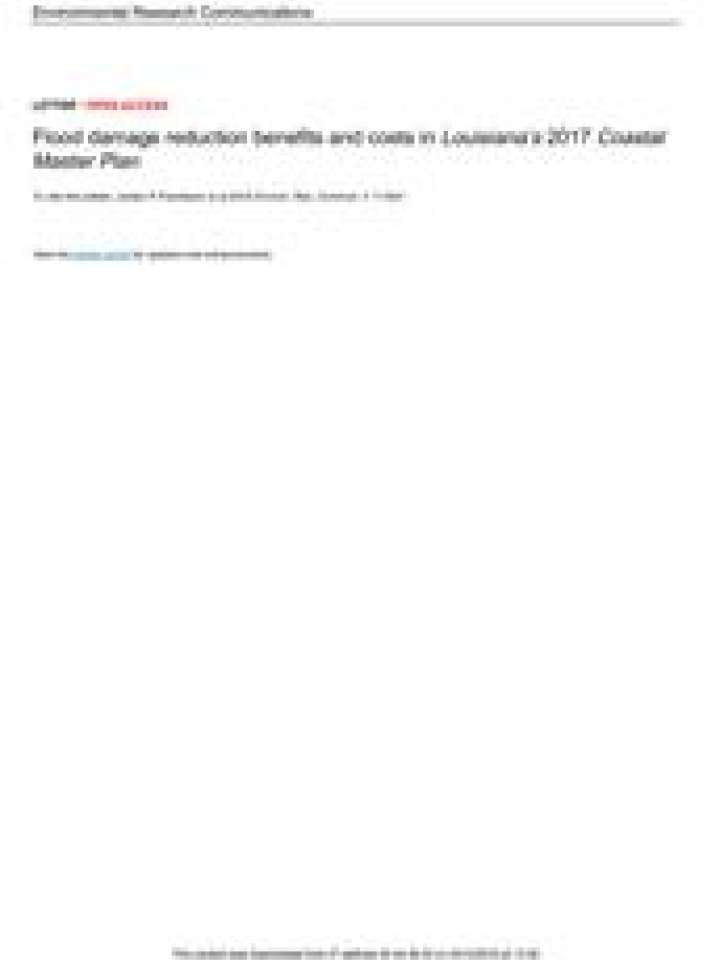Flood damage reduction benefits and costs in Louisiana's 2017 coastal master plan
The State of Louisiana faces a substantial planning challenge in addressing the joint problems of rapid coastal land loss and storm surge flood risk, exacerbated by rising sea levels and land subsidence. To address these twin challenges, Louisiana has developed a series of coastwide master plans that include substantial investments in coastal restoration and hurricane flood risk reduction, with the most recent update in 2017 that includes about $50 billion in projects to be implemented over 50 years (approximately 2016–2065). This research builds on the integrated modeling analysis conducted in support of Louisiana's 2017 Coastal Master Plan. The Coastal Louisiana Risk Assessment (CLARA) model is used to project coastal flood damage over time under different scenarios, either in a future without action or with the master plan implemented according to its intended schedule. Analysis results suggest positive, notable benefits from risk reduction investments over a range of assumptions about future conditions and economic considerations. A 50-year net economic benefit is estimated from master plan risk reduction investments of $39.6 to $59.8 billion (benefit-cost ratios of 3.0 to 4.1) across several future scenarios with a 3% assumed discount rate, for instance. Scenarios with higher sea level rise (SLR) and coastal subsidence rates generally yield greater net economic benefit from flood risk reduction investments. Net benefit from risk reduction investments is negative only with the highest discount rate assumption (7%) and if costs are somewhat higher than initially estimated for structural or nonstructural projects. In general, implementing the master plan could yield considerable net economic benefit from damage reduction investment for coastal Louisiana in many plausible future scenarios if implemented as planned.
Explore further

